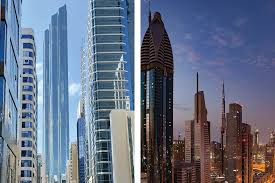
The United Arab Emirates (UAE) is celebrating one of its most successful years for tourism, with record visitor numbers, rising hotel revenues, and an increasing contribution to the national economy. Recent reports show that Dubai welcomed nearly 10 million international overnight visitors in the first half of 2025, a 6% increase compared to the same period last year. This strong performance puts the UAE firmly on track to meet its ambitious tourism targets.
Strong Growth Across the Sector
Hotel revenues across the country reached 26 billion AED in the first six months of 2025, supported by an average occupancy rate of more than 80%. In 2024, the UAE recorded over 30 million hotel guests, up nearly 10% compared to the previous year. Analysts note that these figures are not only higher than pre-pandemic levels but also reflect growing global confidence in the UAE as a world-class destination.
Tourism now contributes almost 13% to the UAE’s GDP, with the industry valued at 267.5 billion AED in 2025. Spending by international visitors is expected to reach 228.5 billion AED this year, about 37% above the 2019 peak, while domestic tourism is also flourishing, with projected spending of 60 billion AED. This combination of international and local travel demand has created a strong foundation for long-term growth.
A Vision for 2031
The UAE’s success is not accidental. Under the National Tourism Strategy 2031, the country aims to attract 40 million hotel guests annually and raise the sector’s contribution to GDP to 450 billion AED. The strategy places emphasis on diversifying tourism beyond luxury and shopping, with greater investment in cultural experiences, heritage tourism, wellness retreats, and eco-friendly initiatives.
Officials have highlighted that this approach ensures tourism growth benefits not just the economy, but also the wider community and environment. Plans include restoring heritage sites, promoting Emirati traditions, and expanding
cultural festivals to showcase the UAE’s history and identity to international audiences.
Driving Factors Behind Growth
Several factors are fueling this momentum. The government has made tourism a cornerstone of economic diversification, investing heavily in infrastructure, airports, and new hotels. Emirates and Etihad Airways continue to expand routes, making the UAE more accessible to visitors worldwide. Marketing campaigns have also raised the country’s global profile, positioning it as a safe, innovative, and vibrant hub for travelers.
Additionally, the UAE has developed a reputation for hosting major international events, from world-class exhibitions to sporting tournaments, which bring in millions of visitors each year. Combined with year-round sunshine, luxury resorts, and state of the art entertainment, these attractions keep the UAE on the list of top global destinations.
Looking Ahead
While the outlook is highly positive, officials are aware of the challenges that come with rapid growth. Sustainability remains a key concern, with steps being taken to manage environmental pressures, reduce carbon footprints, and ensure visitor experiences remain high quality. Competition from other tourism destinations also means the UAE must continue to innovate and expand its offerings.
Despite these challenges, the future looks promising. New resorts, cultural attractions, and eco-tourism projects are set to open in the coming years, while digital technologies are being introduced to improve visitor services and streamline travel experiences. With record-breaking visitor numbers, strong economic impact, and ambitious long-term plans, 2025 is shaping up to be a land mark year that sets the tone for the UAE’s future as a global leader in tourism.